Key takeaways:
- Kindness in children often arises naturally but can be influenced by social dynamics as they grow, making it crucial to teach its importance consistently.
- Encouraging kindness through shared experiences, such as volunteering and open discussions, reinforces its value and promotes compassionate behavior in children.
- Play is a powerful tool for developing empathy, as it allows children to understand different perspectives and learn the significance of supporting one another.
- Successful community initiatives, such as “Kindness Week” and mentorship programs, foster connections and demonstrate the broader impact of kindness in building supportive environments.
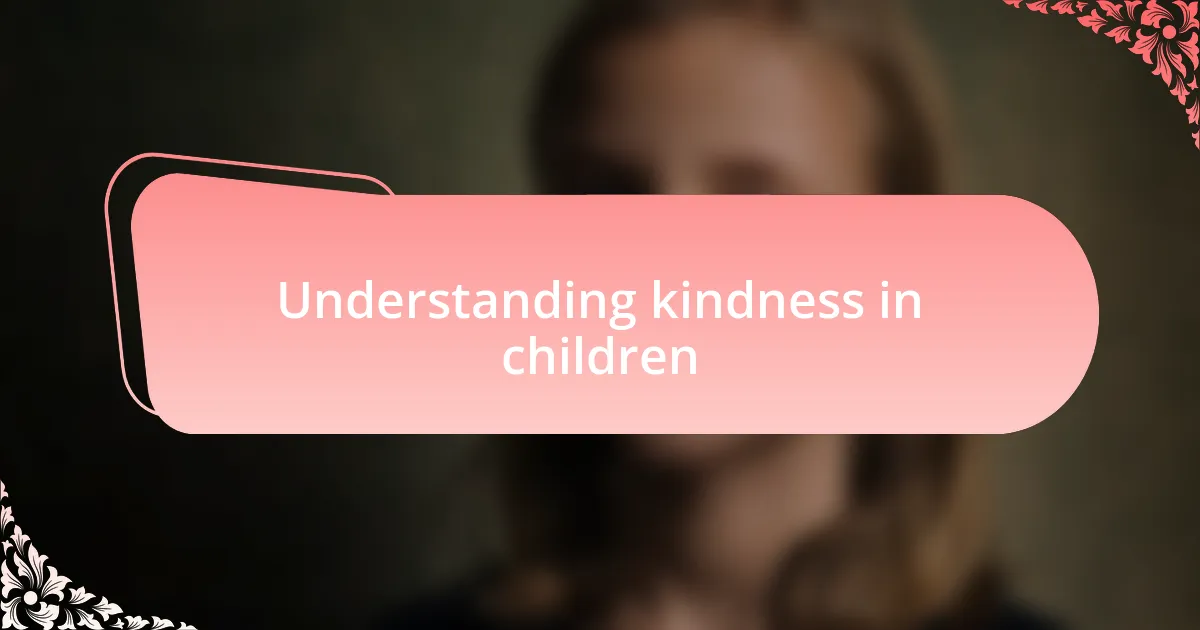
Understanding kindness in children
Kindness in children often starts as a natural response to the world around them. I remember my daughter, at just five years old, going out of her way to share her toys with a new friend at preschool. Watching her made me wonder—what is it about that age that fosters such empathy? It seems children instinctively grasp the importance of connection and compassion.
As they grow, however, the external influences become harder to navigate. I noticed my son hesitating before helping a peer, likely influenced by the social dynamics at play in school. This moment made me reflect: what happens to that pure instinct as they interact with various personalities? Teaching our kids that kindness should be a priority—regardless of the situation—can help them maintain that essential quality through life’s challenges.
Ultimately, understanding kindness in children isn’t just about observing their actions; it’s about tuning into their emotions. I’ve had conversations with my kids about how it feels to lift someone’s spirits through a simple act of kindness, like giving a compliment or helping someone in need. I often ask them, “How do you think your words can change someone’s day?” Their answers reveal a profound understanding that kindness is not only about the act itself but also about the feelings it fosters in others.
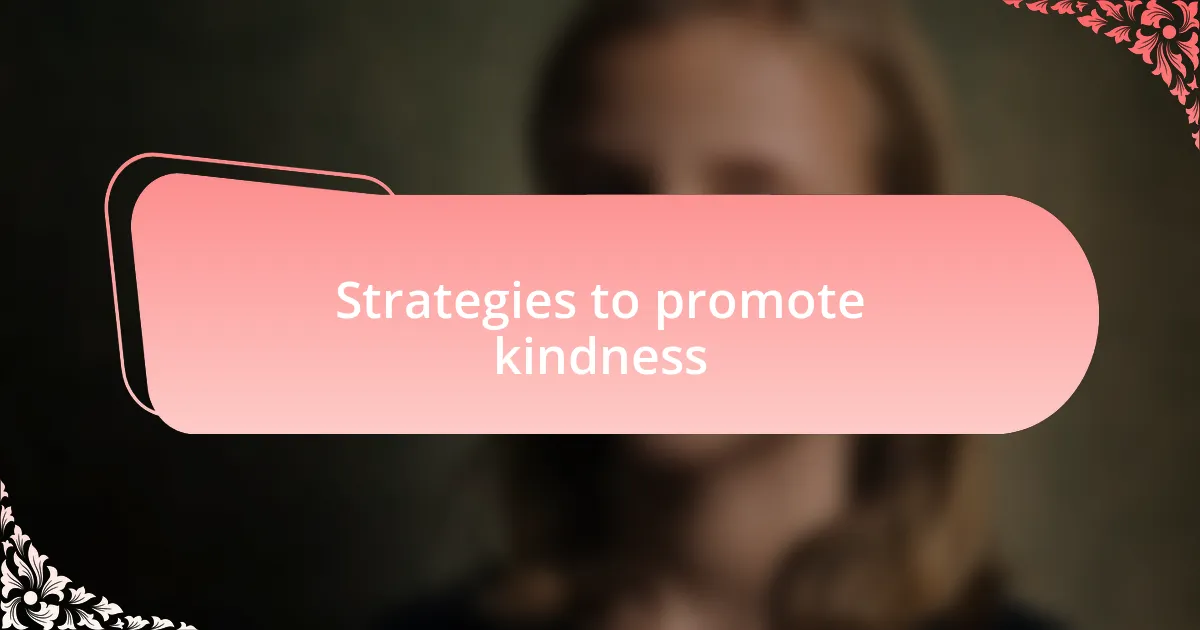
Strategies to promote kindness
Creating environments that nurture kindness is essential. I remember when our school organized a “kindness day,” encouraging kids to perform small acts throughout the week. The excitement was infectious; my daughter came home each day bursting with stories of her classmates leaving uplifting notes in random lockers. It made me ponder: how can we expand these small gestures into a daily practice?
Another strategy is to model kindness ourselves. One evening, I took the time to volunteer at a local food bank, and my son eagerly wanted to join. As we sorted food together, I noticed him absorbing the spirit of giving. I often think, how can I show my children that kindness is a lifestyle? Engaging in these shared experiences not only teaches them the value of helping others but also plants seeds for a more compassionate future.
Encouraging open dialogues about kindness can also be transformative. At dinner, I ask my kids to share one kind thing they did that day or witnessed someone else do. This simple ritual not only sparks meaningful conversations but also reinforces the importance of these actions. I’ve learned that by creating space for these discussions, we remind our children that even the smallest act can have a ripple effect, shaping a kinder community for all of us.
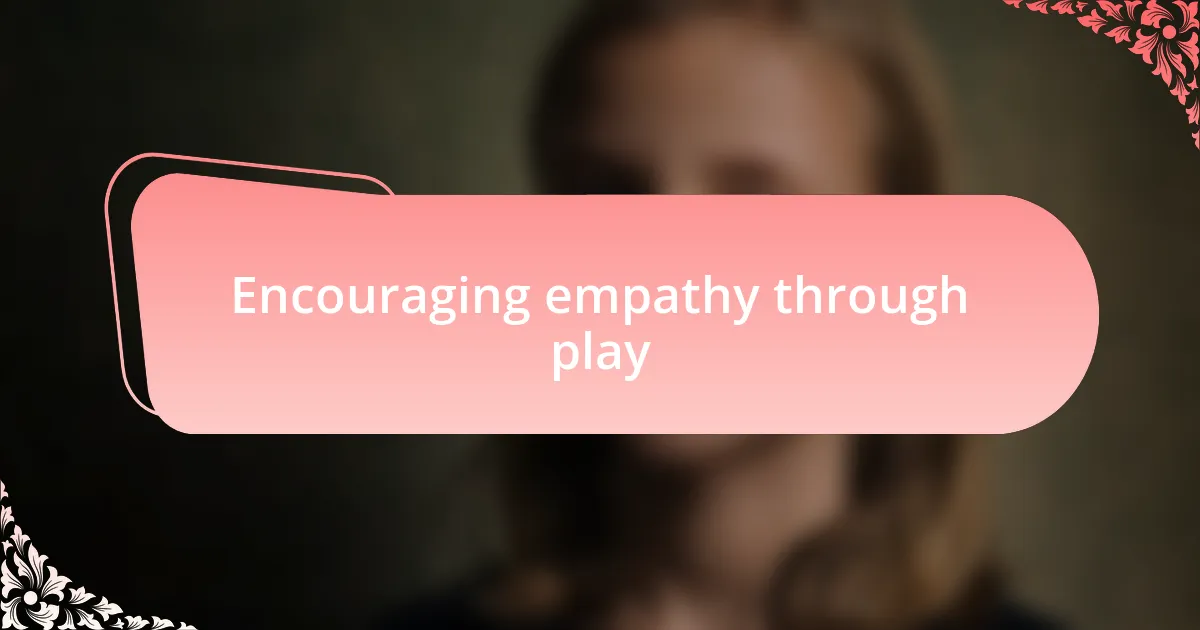
Encouraging empathy through play
Play serves as one of the most powerful tools in fostering empathy in children. I remember a day when my kids and their friends transformed our backyard into a bustling “city,” where they took on various roles like shopkeepers and customers. Watching them negotiate, share, and sometimes resolve disputes among themselves revealed their budding ability to understand and appreciate different perspectives. It made me realize: how often do we overlook the lessons that come naturally during play?
Participating in role-playing games can also significantly enhance empathetic skills. One afternoon, we acted out a scenario where one child was feeling sad and others had to respond. My son, unexpectedly assigned to comfort his friend, struggled at first but gradually found the right words. Seeing him empathize and practice those skills was a heartwarming moment that reminded me of the importance of guided experiences in helping kids develop emotional intelligence.
There’s a certain magic in collaborative play that encourages children to think beyond themselves. I often observe my daughter’s reaction when she helps a friend who is having difficulty during a game; her immediate instinct is to offer assistance and encouragement. It strikes me that through these everyday moments, not only are they learning to be kind, but they are also laying the groundwork for deeper connections with others. What greater gift can we give our children than the ability to empathize?
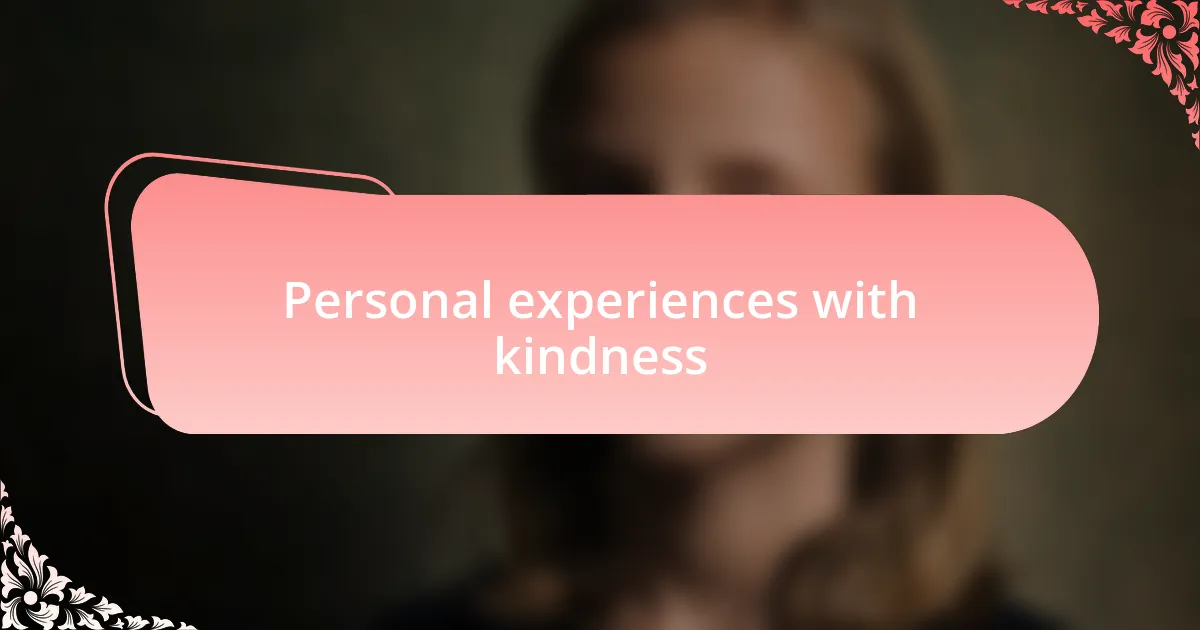
Personal experiences with kindness
To me, kindness often feels most profound in those simple, everyday moments. One morning, while volunteering at my child’s school, I witnessed a small act that left a lasting impression. A girl shared her favorite book with a classmate who seemed shy and unsure. The glow of excitement on the boy’s face as he accepted the book was something I won’t forget. It’s incredible how a simple gesture can ignite a sense of belonging in a child, isn’t it?
I remember when my son struggled with a classmate who was dealing with family issues. One day, he came home and realized that just listening could be a powerful way to show kindness. I didn’t expect him to grasp that concept so quickly. His decision to reach out and simply be available made a substantial difference in his friend’s life. It made me ponder, how often do we overlook the strength found in just being there for someone?
On a recent family outing, I was touched to see my daughter spontaneously help an elderly woman with her grocery bags. The genuine smile the woman shared with us was a beautiful reminder of how kindness can bridge generations. It sparked a conversation among us about the impact our actions have on others—what if every child learned to see kindness as a natural part of their daily lives? This experience reinforced my belief that promoting kindness is less about grand gestures and more about nurturing these small, heartfelt interactions.
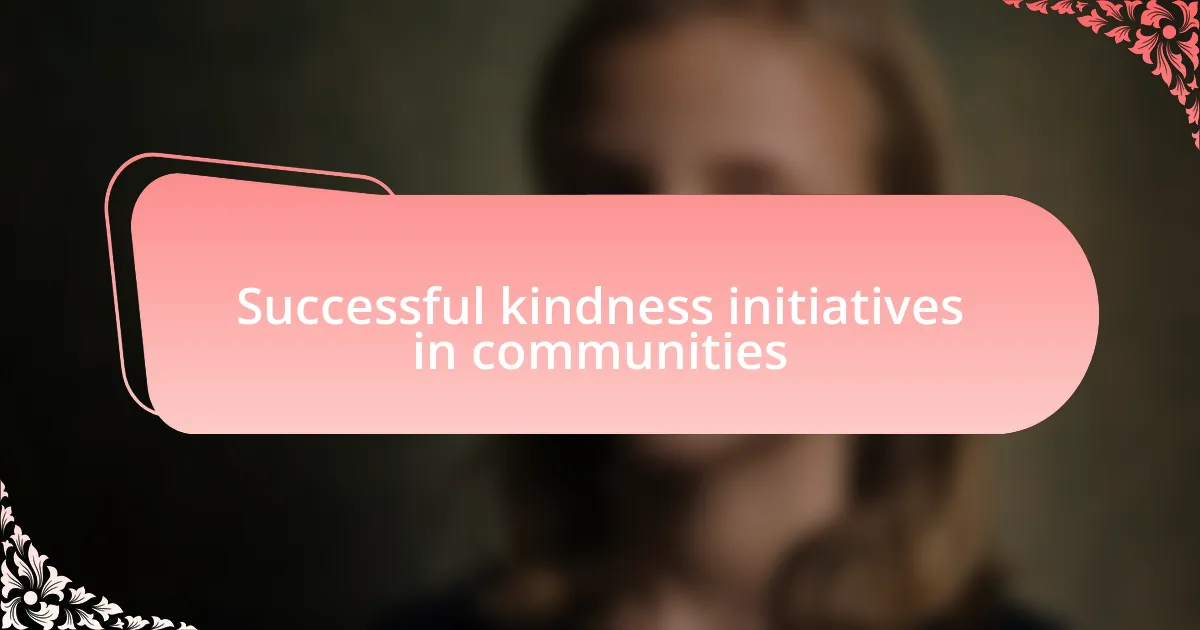
Successful kindness initiatives in communities
One initiative that stands out to me is a local “Kindness Week” organized by neighborhoods. Families come together to perform acts of kindness, like leaving cheerful notes on neighbors’ doorsteps or helping with yard work. The joy radiating from these small gestures is contagious, fostering a sense of community that lifts everyone’s spirits. Isn’t it heartwarming to think how even a few days dedicated to kindness can create ripples of goodwill?
Another inspiring example is a mentorship program that pairs older children with younger peers at schools. I once saw a high school student take a younger kid under his wing, helping him navigate challenges in school. The way their friendship blossomed, with laughter and support, truly emphasized how powerful kindness can be in shaping a child’s confidence. Have you ever witnessed such connections? They remind us that kindness isn’t just an action; it’s a thread that weaves individuals into a supportive fabric.
Additionally, I’ve come across community gardens that not only provide fresh produce but also foster cooperation and kindness among families. Families work side by side, planting and tending to the garden while sharing stories and life lessons. During one of my visits, I saw children exchanging seeds they saved from their harvests. It was a beautiful moment of sharing and connection, illustrating that kindness can grow from a simple garden and flourish in unexpected ways. Don’t you think this approach encourages children to view kindness as a way to contribute to their community?